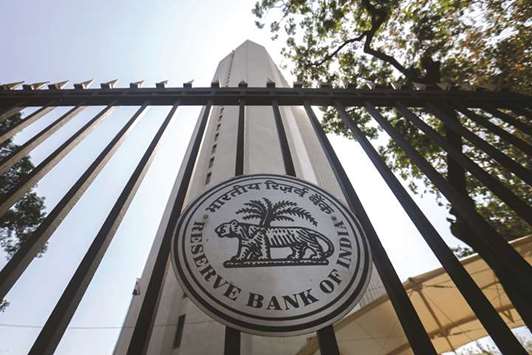Rules pertaining to transfer of Indian central bank’s surplus funds to the government, a key point of conflict between the two, will come up for discussion when the monetary authority’s board meets on Monday, people with knowledge of the matter said.
The agenda for the meeting, the first after differences between Governor Urjit Patel and his political bosses turned into a public spat last month, also lists a review of lending norms for weak state-run banks, the people said, asking not to be identified as they aren’t authorised to speak to the media.
Other proposals on the agenda include a dialogue on capital and risk weight norms for Indian lenders - considered more stringent than the Basel guidelines, and restructuring of loans up to Rs250mn ($3.5mn) availed by small businesses, they added.
The transfer of surplus reserves has been a flash point between the government and the central bank in the recent weeks and Monday’s meeting could see government-nominated members on the Reserve Bank of India board clashing with Patel, who heads the board. While the government wants additional funds to boost spending on road, ports and country’s poor, central bank Deputy Governor Viral Acharya warned in a speech recently that such a move will undermine RBI’s independence and will attract the wrath of the markets.
Finance Ministry spokesman DS Malik declined to comment, while a spokesman of the RBI was not immediately available for a comment.
As investors look for clues on what Monday’s meeting will lead to, economists see the discussion paving the way for a compromise. “While the government and RBI may seem to be on different sides of the battle, they are effectively on the same side on the war,” said Teresa John, economist at Nirmal Bang Equities, referring to their goals of price and financial stability and economic growth. “We are therefore optimistic and believe that the government and RBI will be able to arrive at a common ground.”
The central bank may be open to easing tight financial conditions prevailing in the banking sector, including by injecting cash through open market purchases of bonds, according to the people. It is averse to parting with the reserves as some of these are notional, or relax capital adequacy norms for lenders, they added.
Apart from the reserves transfer, the central bank’s prescription for capital adequacy ratio, a measure of a bank’s financial strength, of 9% is also a thorny issue between the two. The government feels the norms are very stringent compared with global standards and cite the Bank of International Settlements’ 8%.

The Reserve Bank of India headquarters in Mumbai. Rules pertaining to transfer of Indian central bank’s surplus funds to the government, a key point of conflict between the two, will come up for discussion when the monetary authority’s board meets on Monday.


